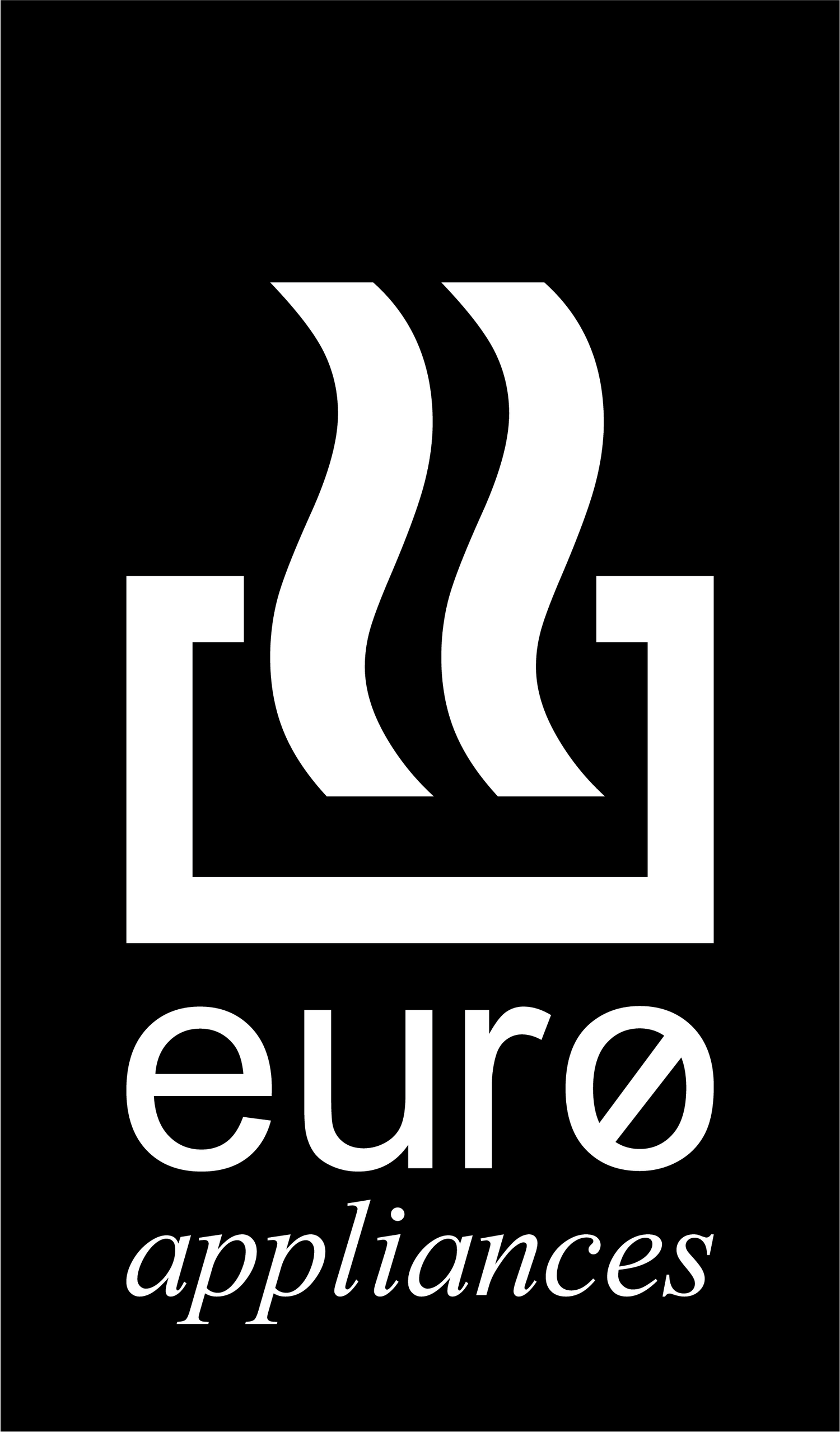
Frequently Asked Questions
Need more information on your appliances? Find solutions to common issues you may experience, along with tips and maintenance for your appliance after-care
Built In Ovens
-
The oven is not connected to electrical power. Ensure the oven is connected to the power outlet. The oven will go into ‘set Up’ mode when the electricity is restored after a power cut. The clock display will need to be reset.
-
Have you recently removed door please check you have re-fitted correctly. In very limited cases the door hinges may be faulty and require servicing. Contact euro Service Centre on 1800 440 335 to make an appointment for a qualified technician to perform the service.
-
The light bulb has blown. Replace the light bulb. Ensure oven is connected to a power outlet.
-
Make sure you are selecting the correct function.For technical advice please contact euro Service Centre on 1800 440 335.
-
If the oven is relatively new, the problem is invariable due to protective oil on elements. If the oven has already been significantly used, it may be oil or fat deposited on the elements during cooking. In both scenarios, continued use will burn the residue.
Freestanding Ovens
-
Ensure the oven is connected to the power outlet.
The household power supply is at fault. The oven will go into ‘set up’ mode when the electricity is restored after a power cut. The clock display will need to be rest.
-
The burner’s ignition may need to be adjusted to reposition closer to the burner cap. Contact euro service to get hold of a qualified service technician to perform this task.
The burner’s slot (electrode) may be blocked by debris. Try cleaning and/or drying the burer.
-
Check that you are using the recommended temperatures and shelf positions. Do not use a tin or tray larger than the baking tray we supplied. If you are cooking a large item be prepared to turn it around during cooking. If two shelves are used, check that space has been left for the heat to circulate.
-
Make sure you are selecting the correct function.For technical advice please contact euro Service Centre on 1800 440 335.
-
They may get hot due to the heat transfer from the element. All our products comply with Australian standards
Rangehood
-
All euro rangehoods can be converted to recirculate the air providing carbon filters are first fitted to the motor (carbon filters can be purchased at the same time as the rangehood).
-
Carbon filters should be replaced frequently (suggested every six months on average depending on the style of cooking). To do so, unplug the appliance from its mains. If connected permanently to the mains, disconnect the double pole switch to zero (0). Pull out the carriage and remove the anti-grease filter. Insert the carbon filter taking care of the two holes slot on to the reference pins of the support and give an anti- clockwise turn until it locks into place. Replace the mental anti-greasing filter and close the carriage.
-
Use only bulbs with an E14 40Wmax coupling. Can be purchased from all leading hardware outlets.
-
The recommended position for the hood is between 650mm - 750mm above the electric hotplates or has cooktop.
This applies to built-in cooktops or freestanding cookers
-
To maintain efficiency the filter should be removed regularly (approximately monthly), and washed using soap or mild detergents or dishwasher powders. Badly smoked filters may be cleaned with cookware cleaners
NOTE: On recirculating models a fully saturated charcoal filter will become a barrier to air movement therefore impeding ranegehood performance. Also in the event of fire, fully grease laden filters could be flammable and therefore regular replacement is recommended.
-
For ducted range-hoods the air is directed to the outside, but re-circulating range-hoods return the filtered air back into the room via vents on the front of the range-hood or a duct kit.
-
For re-circulating range-hoods carbon filters remove odors. For frequent oil based cooking, the filters should be changed approximately every 2 months, for cooking that involves mainly boiling or steaming with little oil based cooking, the filters should be changed less frequently.
Cooktops
-
There is no power. Ensure the cooktop is plugged in and there is power to the wall socket.
There is no gas. Ensure the gas supply valve is turned on and the supply to the house is working. The gas should be heard when a burner is turned on.
The gas igniters are dirty. Clean with a toothbrush and methylated spirits.
The burner parts are not properly located. Ensure the cooktop has been assembled correctly and the burner cap is sitting flat.
-
The burner parts are not located correctly. Ensure the cooktop has been assembled correctly and the burner cap is sitting flat. The gas (if bottled is used) is emptying. Refill the gas bottle.
-
The burner parts are not located properly. Ensure the cooktop has been assembled correctly and the burner cap is sitting flat.
-
Yes, there is no problem with lighting it manually
-
Up to 1 cm larger than the etched markings on the surface of the ceramic cooktop
Dishwashers
-
The power switch is not turned on at the wall. Unplug the machine from the wall. Wait 60 seconds, plug back in and turn the power back on again. The household power supply is at fault. Try plugging another electrical appliance into the power slot.
The door is not closed properly. Ensure the door is closed by pushing the handle forward until it ‘clicks’.
-
The drain hose is bent or kinked. Straighten the hose to allow water flow. The strainer is blocked. Empty the strainer and ensure the filter plate is clear of food particles.
-
The Dishwasher is overloaded. Reduce the Dishwasher load. Ensure the spray arms can rotate freely and remove food scraps from dishes before loading.
The spray arm holes are blocked. Remove the spray arms, rinse under tap water and replace.
Not enough detergent has been used. Use the recommended amount of detergent.
The strainer is blocked. Clean the strainer.
-
The taps are turned off. Ensure the taps are turned on. The inlet hose is bent or kinked. Straighten the inlet hose to allow water to flow through.
-
There is insufficient Rinse Aid. Ensure the Rinse Aid dispenser is filled. The Dishwasher is overloaded or loaded incorrectly. Reduce the Dishwasher load or ensure the Dishwasher is loaded correctly.
-
The Dishwasher has been loaded incorrectly. Ensure the Dishwasher is not overcrowded as moisture can be trapped if items are too closely loaded.
The supply of Rinse Aid has depleted. Ensure the Rinse Aid dispenser is filled.
Ensure that not too many plastic items in your dishwasher. (Plastic does not dry).
-
The detergent dispenser lid has not opened. Ensure there is nothing obstructing the opening of the dispenser lid.
The detergent dispenser was wet when the detergent was loaded. Dry the detergent dispenser before loading again to prevent caking.
Ensure the recommend quantity of detergent is used.
-
The dishwasher may be loaded with mixed stainless steel cutlery. Make sure you separate them into different compartments of the cutlery basket.
-
You can wash most good quality plastics in dishwashers. However, do not force them into the racks or they will change shape.
Do not put items that soften at temperatures of 50° C and over into the dishwasher.
Also, do not wash small plastic items in the dishwasher as they may fall onto the exposed heating element.
-
Soft water and lightly soiled dishes generally require 10 to 20 grams of powdered detergent; hard water and heavily soiled dishes require 20 to 30 grams. Do not use normal hand washing up detergents in your dishwasher as they will cause extensive foaming.
What should I do if I don’t plan to use the dishwasher for a few weeks, or will be away on holidays?
Leave the dishwasher door open to prevent bacteria growth from causing stale odours. Also, shut the water to the dishwasher off, should a hose burst while you are away this will prevent flooding.
-
Yes, the level will be just up to the filter. This is to stop the seals from drying out.
-
When it refers to 12 place settings it means a setting for 12 people. i.e. 12 dinner plates, bread plates, saucers, cups and cutlery.
